
Overhead mic shootout: STO-2, MK-012, M179
Thursday, October 16th, 2008 | by matthew mcglynn
I’ve been using a pair of Oktava MK-012 SDCs as my go-to overhead mics for years, ever since I conducted a shootout comparing the MK-012 to AKG C1000S and EV 635a mics. To my ear, the Oktavas won that test handily, offering better imaging, broader frequency response, and more musical results as compared to the other mics. The differences were easily audible via MP3s played back on my desktop stereo speakers.
I have since acquired more microphones that were begging to be heard in this application, so I set up a second shootout.
The Mics
 The CAD M179 is a multipattern large-diaphragm condenser known for its extended frequency response and low self-noise. For this test, I set the mic’s pattern to Cardioid, and enabled the onboard high-pass filter. The street price for a pair is about $400. This mic is designed to have a neutral, rather than a colored tone, and is known for having extended low-frequency response (although the CAD website shows frequency graphs down only to 40Hz, a 2001-era owner’s manual shows the mic flat down to 10 Hz!).
The CAD M179 is a multipattern large-diaphragm condenser known for its extended frequency response and low self-noise. For this test, I set the mic’s pattern to Cardioid, and enabled the onboard high-pass filter. The street price for a pair is about $400. This mic is designed to have a neutral, rather than a colored tone, and is known for having extended low-frequency response (although the CAD website shows frequency graphs down only to 40Hz, a 2001-era owner’s manual shows the mic flat down to 10 Hz!).
 The Avenson STO-2 is an omnidirectional electret mic built around a tiny Panasonic capsule. The frequency response is ruler-flat to about 9kHz, dropping slightly to -1dB @ 20kHz. The street price on these is $550 for a matched pair. Like the M179, the STO-2 has a neutral and uncolored tone.
The Avenson STO-2 is an omnidirectional electret mic built around a tiny Panasonic capsule. The frequency response is ruler-flat to about 9kHz, dropping slightly to -1dB @ 20kHz. The street price on these is $550 for a matched pair. Like the M179, the STO-2 has a neutral and uncolored tone.
 And of course my MK-012s are part of this mix, although since that shootout I’ve had my mics upgraded my Michael Joly of OktavaMod. I’m using Cardioid capsules. The street price for a matched pair is about $495 (stock) or $669 (with the OktavaMod Premium Electronics upgrade).
And of course my MK-012s are part of this mix, although since that shootout I’ve had my mics upgraded my Michael Joly of OktavaMod. I’m using Cardioid capsules. The street price for a matched pair is about $495 (stock) or $669 (with the OktavaMod Premium Electronics upgrade).
Early Expectations
I had questions, going in to the test, about the directionality of the STO-2. My live room is small, about 14'x14'x8', and although I deploy acoustic foam liberally in an attempt to reduce reflections and bass build-up, I had concerns about recording more of the room sound than I’d get with cardioid mics… because I think the room sound sort of sucks.
Also I was curious to hear the effects of diaphragm size. The STO-2 has a 6mm diaphragm. The Oktava diaphragms measure 17.5mm. The M179 diaphragm measures about 28mm (and there are two of them). Would the various sizes create different stereo images? Would I be able to hear the differences in transient response? How would the stereo images compare?
Setup and Configuration
For all these tests, I used the mic preamps in a Presonus Digimax FS, and recorded directly into Pro Tools at 44.1 kHz / 24-bit, with no compression or EQ. Pro Tools was configured to use the clock in the Digimax. I matched gain levels as closely as possible for all mics.
The mics were all mounted in a spaced-pair arrangement, with the grille screens for each pair of mics equidistant from and pointing at the center of the snare drum. On each side of the kit, the three different mics were positioned as close together as physically possible.
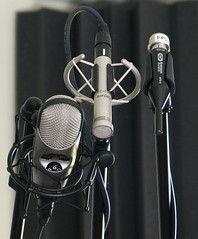 From longer recordings, I selected representative 4-bar sections and bounced them from Pro Tools at unity gain as 24-bit WAV files. These sections were very slightly normalized in Bias’ Peak Pro — less than 1dB change in most cases — to ensure that playback levels are matched. Then I assembled the various 4-bar samples into the files presented here, and output both as 24-bit WAV and as 16-bit (dithered) 256k MP3.
From longer recordings, I selected representative 4-bar sections and bounced them from Pro Tools at unity gain as 24-bit WAV files. These sections were very slightly normalized in Bias’ Peak Pro — less than 1dB change in most cases — to ensure that playback levels are matched. Then I assembled the various 4-bar samples into the files presented here, and output both as 24-bit WAV and as 16-bit (dithered) 256k MP3.
Sample Audio
In each audio file linked below, you’ll hear the same 4-bar excerpt several times in a row, once for each pair of microphones. I had all three pairs of mics recording every performance, so except as noted, you won’t hear performance differences within a single audio file.
In hopes of giving your ears, rather than your expectations, an opportunity to decide what sounds better, I have not identified the mic order in these filenames. Scroll down to my listening notes to learn which is which…
Sample 1:
Sample 2:
Sample 3:
All three files contain a 4-bar drum pattern, three times in a row (as heard by each of three different pairs of mics.
Listening Notes
Before getting into specifics, I’ll say that I found the differences between these mics to be subtle, and they changed based on what I’ll generously call my “monitoring environment” (a collection of consumer-grade speakers and headphones). I had a hard time describing the differences, and I’m not sure they would be meaningful within the context of a full mix. All these mics sound good to me, and any would work for my purposes.
But in the spirit of pursuing subtle improvements using whatever gear is at hand, here are my listening notes.
First Sample
The first thing that jumped out at me when playing the first sample is the sound of the high-hats in the middle third of the file (MK-012). I hear more stick definition and a more open high end. I don’t particularly like the sound of the hi-hats, even in the room, but I like the brightness and honesty of these mics; there’s a “reach out and touch it” presence to the hats and snare that really appeals to me.
In the first third of the file (STO-2), I love the balance. The high-hats are softer. The overall mix is very neutral; I feel like I’m standing behind the drummer in the room. I don’t hear a mess of bad room sound, as I feared I might — rather, the omni mics seem to just soften the edges of the transients. This sounds like the truest representation of the drum kit, and after my first few listens it was my favorite of the three in this test.
In the final third (M179, cardioid), the sound is a bit thin and lacking in the low-end, especially as compared to the STO-2 pair. I hear no body to the drums. Assuming there would be close mics on the drums, and the OH pair would be used primarily for cymbals, this might actually be a good thing. Also I think the M179s did the best job of capturing the crack of the snare — not what I expected from a large-diaphragm mic.
So, where does that leave us? I want the balance of the STO-2, the high-end of the MK-012, the transient response of the M179, and a new pair of high-hats. Hmph.
Second Sample
In the second file, I can barely detect a difference between the three sets of mics. The MK-012 (middle third of the clip) is brighter, as before, but the difference seems more subtle. The STO-2 (first third) has more LF than the M-179 (last third), but again, it’s subtle. The toms sound the same to me throughout, and seem to be in the same places for all mics. I don’t hear a space difference between the STO-2 and either of the two cardioid mics. Considering how different the three mics are, it’s somewhat astounding to me that they all sound so similar here.
Third Sample
In the third file, again, the differences are subtle. It’s instructive to focus on the crash cymbals, both to listen for changes in HF response and to listen for movement in the stereo field. The Oktavas (middle third) seem just a bit wider, meaning more L/R separation, than I hear from the STO-2s (first third). The Oktavas have more presence, presumably due to their directionality, but they lack a bit of the body of the kit that the STO-2 captures. The 179s (final third) are a bit less bright than the Oktavas but otherwise seem indistinguishable.
Just to make that clear
The mics in all the above clips were ordered by diaphragm size:
- STO-2 omnis
- OktavaMod MK-012 cardioid
- CAD M-179, cardioid mode, HPF not engaged
Not really a conclusion
 In a different room, especially a larger and more live room, the STO-2 omnis could be expected to pull in a bigger, more ambient sound and would likely sound more different from any cardioid mics than this test suggests. But in my room, the difference between a cardioid mic and the STO-2 is pretty subtle, and amounts more to a softening of transients than anything else. I appreciated the fullness and balance of this mic; it’s not wanting for any frequencies. I will be reaching for these when I’m looking for less “edge” or less stick definition to the drum track; e.g. when the drums are playing a supporting role rather than providing a primary voice in the mix.
In a different room, especially a larger and more live room, the STO-2 omnis could be expected to pull in a bigger, more ambient sound and would likely sound more different from any cardioid mics than this test suggests. But in my room, the difference between a cardioid mic and the STO-2 is pretty subtle, and amounts more to a softening of transients than anything else. I appreciated the fullness and balance of this mic; it’s not wanting for any frequencies. I will be reaching for these when I’m looking for less “edge” or less stick definition to the drum track; e.g. when the drums are playing a supporting role rather than providing a primary voice in the mix.
 My OktavaMod MK-012 pair impressed me with their high-end response. I like the stick definition and the sense of presence I get from these mics. They will likely remain as my go-to OH pair unless I’m using them on something else already.
My OktavaMod MK-012 pair impressed me with their high-end response. I like the stick definition and the sense of presence I get from these mics. They will likely remain as my go-to OH pair unless I’m using them on something else already.
 The CAD M179 pair surprised me. On the one hand, these mics are nearly indistinguishable from the modded MK-012s, which is to my mind a great achievement and a wonderful value. On the other hand, these mics didn’t reach as high or as low as the Oktavas. I did like the smack of the snare drum best from these mics, but for the overall mix I don’t see enough reason to reach for these.
The CAD M179 pair surprised me. On the one hand, these mics are nearly indistinguishable from the modded MK-012s, which is to my mind a great achievement and a wonderful value. On the other hand, these mics didn’t reach as high or as low as the Oktavas. I did like the smack of the snare drum best from these mics, but for the overall mix I don’t see enough reason to reach for these.
And now for Omni
That said, the M-179 is a multipattern mic, and as such demands more experimentation. I repeated my test, with the M-179 set to Omni. Following are two clips; one, like above, contain the same 4-bar measure as heard by all three mics. The second clip contains two different performances, one as heard by the M-179 in Cardioid, and the other as heard by the M-179 in Omni.
Sample 4:
Sample 5:
Listening notes II
The M-179s have surprised me again!
The order of mics in the fourth sample is as in the first three: 4 bars of STO-2, then 4 bars of MK-012 (cardioid still), then 4 bars of M-179 (Omni, no HPF). My gut reaction: Where did all that kick drum come from?
The fifth sample is all M-179: four bars of Cardioid mode followed by four bars (different performance) of Omni mode. The change is striking!
The M-179 in Omni brings a serious upgrade to the LF sound as compared to its Cardioid mode. I actually checked CAD’s frequency plots for this mic, expecting to see some nonlinearity in the lows in Omni mode. The graphs are flat, though; I guess I’m just hearing the room. Whatever it is, the kick drum has a nice, fat roundness of tone that I’m not hearing in Cardioid mode. Moreover, the Cardioid clip makes the drums sound like they’re farther away.
Comparing the two omnis in Sample 4 (meaning, the first third and final third of the file), I prefer the CAD. The STO-2 sounds more focused and more directional than the M-179 in Omni mode. The STO-2 clip sounds great, like I’m standing behind the drummer. In contrast, the M-179 Omni puts me in the middle of the drum kit. The room sounds bigger. The drums sound bigger. The snare has more attitude than I hear from the STO-2s.
High Frequency Comparison
|
Crashes, MK-012: 24-bit WAV |
Because I’d looped all the other samples, none contained any crash cymbals. I’ve provided a few isolated crashes here to allow comparison of the high-frequency response of each pair of mics.
The STO2 sounds great. The MK-012 seems to have the most HF extension and the best transient response in this test. The M 179 sounds flat and somewhat dull.
Wrapping it up
Compared to my first shootout, the differences here were less distinct. I’m happy to have identified them (at the cost of literally hours of close listening in headphones!), though, as it will help me pick mics for specific applications in the future.
For example, the M-179 in Omni mode seemed to capture the fullest low end, and it pulled a nice big drum sound out of a room where I wouldn’t have expected one. But for a drier result, the Oktavas bring a nice HF extension and what I’ve come to think of as a super-accurate and detailed sound. And finally, the STO-2 pair is right in the middle, with less-aggressive transients and a wonderfully balanced and easy-to-hear sound.
Bottom line: I’m keeping all these mics. But I can make you a deal on a certain pair of hi-hats…
What do you hear? Which would you pick? The comments are now open.
Tags: avenson, cad, Drums, Microphones, oktava, overheads
Posted in Microphones, Reviews, Shootouts | 14 Comments »
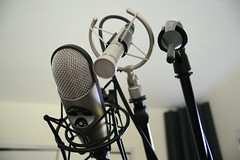
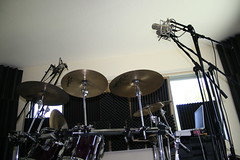
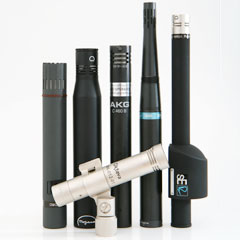
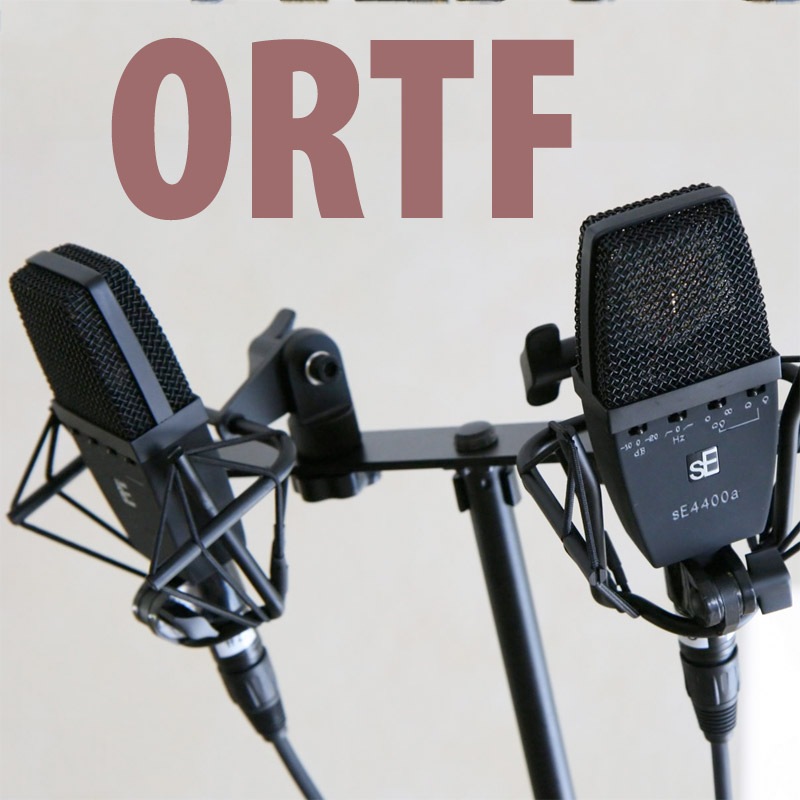
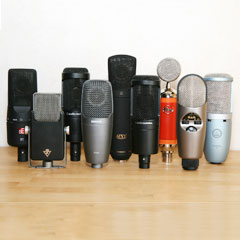
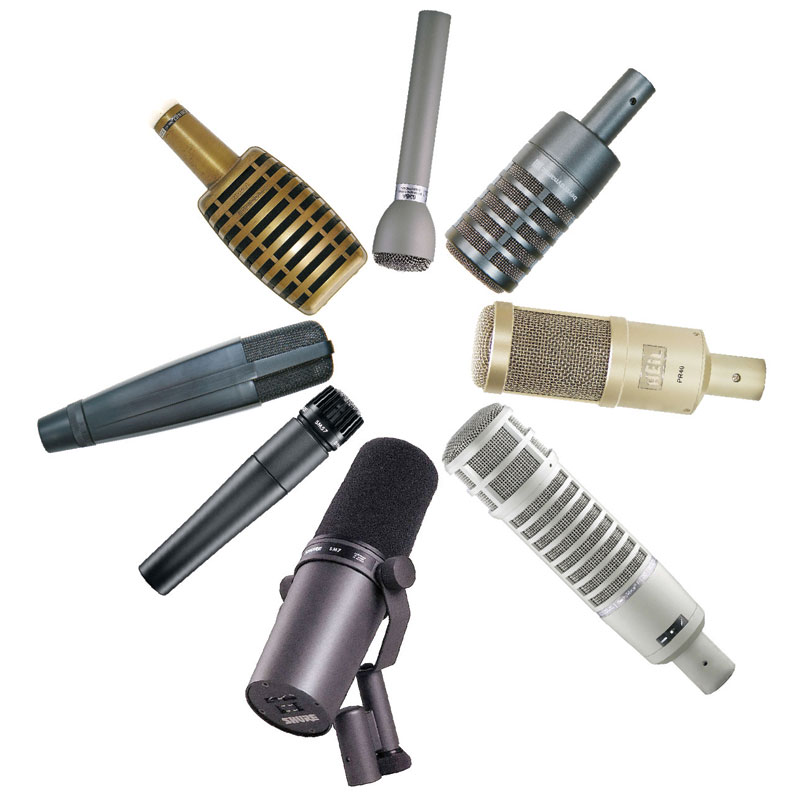
yet another audio engineer
October 19th, 2008 at 9:07 am
Hey, I stumbled on to your site from gearslutz…awesome site, keep it up!
Micky
December 17th, 2008 at 4:57 pm
The M-179 do sound pretty good, however the Oktava still sound the best out of the bunch — cleaner, no dullness, and more open.
Thanks for doing this test. I think I will pick up a M-179 for its multipattern capabilities and its good price.
Seeker of Rock
January 2nd, 2009 at 9:15 am
Great shootout! I really like the sound of the Oktavas, but man the omni mode really opens the kit up. In a perfect world, I would choose the detail and clarity of the Oktavas in an large diaphragm omni mode. I’m using some Naiant msh-1o omnis for my OHs right now, but love to hear other mic clips posted. I think your room sounds great, btw. Very controlled and no nasty reflections I could hear. Great comparison!
Ryan Johnson
September 20th, 2009 at 6:58 am
Thank you very much for doing this.
I actually wasn’t sold on the Oktavas. Especially in the first file, they had so much stick sound and almost too much detail. Of course I tend to dislike ultra pure/crisp sounding drums.
I definitely like the CADs in omni the best. As you said very “sitting in the kit”. I was really wanting to grab some Oktavas but the CADs are a bit easier on the wallet especially once you factor in the Oktavamod cost.
matthew mcglynn
September 20th, 2009 at 1:19 pm
Ryan, I think the M179 is a great microphone. It’s clean and neutral, and incredibly versatile. E.g., if the omni sound isn’t working for you, back off a step or two toward cardioid. Or rearrange the mics to try mid-side. There are a lot of possibilities with multipattern mics. See the M179 profile for a deal on a 3-pack of M179s, for $400.
Bob Eldredge
November 2nd, 2009 at 2:27 am
I have to agree with your findings . For a Jazz or acoustic setting the Omni setting was thicker and more present but with additional close miking I really liked the Oktava m12’s very present and focused Thank you for the shootout I enjoyed it
Barend
December 5th, 2009 at 4:40 am
I planned to sell my pair of NTA-1’s (very bright but they capture the toms nice) en buy a pair of MK012’s. But after hearing the first mk-012 sample I’m not sure anymore. They doesn’t sound natural to me (in this sample).
Well, it’s time for me to do some more testing en reading.
Thanks for your shootout!
Ryan J.
January 25th, 2010 at 1:26 am
Thanks for the shootout!
I rather preferred the sound of the STO-2, at least in this test. They sounded the most natural to me, and I like that quality for overheads.
Ryan S
April 4th, 2010 at 7:42 pm
I think the STO-2 won as well. In succession it felt like the tracks got less full bodied results as they went along. Definitely CAD omni sounds better than cardioid. I really appreciate these shoot outs with the Oktava’s, because I am so close to buying a matched pair for my first set of condensers and these sound clips are a gift- since the sound is really what’s important. Please let me know any more information/tips on working with the Oktava’s and overheads in general, there seems to always be so much to consider besides the mics (placement, preamps, compression, phasing etc.) Thanks!!
Scott Dean
September 30th, 2010 at 5:17 pm
I have a M179 It’s like having 5 different mics. Very useful, smart buy. Recently I used one on male vocals, go to my website and have a listen.
Joe Blasingame
June 6th, 2012 at 4:40 pm
Enjoyed the shootout. The more shootouts we do, the better our knowledge. In fact (shameless plug for AES St. Louis Section), we did a great shootout August 2010 and invite AE’s to visit our website and click on the link to read and listen. It’s called “Secret Weapons” (mic’s under $300 that we turn to). Go to:http://aesstl.org/
Enjoy. I’ve had very good luck with the Oktava’s, recently added a set of Peluso’s CEMC6 and will be running them up the mic stands for OH’s the next session on drums.
Spiros Lefkofridis
July 19th, 2012 at 3:12 am
great job!
thank you !
Bill Ruys
August 15th, 2013 at 6:27 pm
Of course, just as the proximity effect of a cardioid mic makes for increased low frequency when close mic’ing, the opposite is true that the low frequency is attenuated with distance. Omni mics don’t suffer the proximity effect at all, that is why you got much better low end when distance mic’ing in omni mode with the m179 mics.
Andrew
December 5th, 2013 at 4:55 am
The default mic choice seems to be cardioid for nearly everybody with omnis hardly given a thought. That’s a shame, because omnis sound great (imho). Why don’t people consider omnis more often? I think they should.